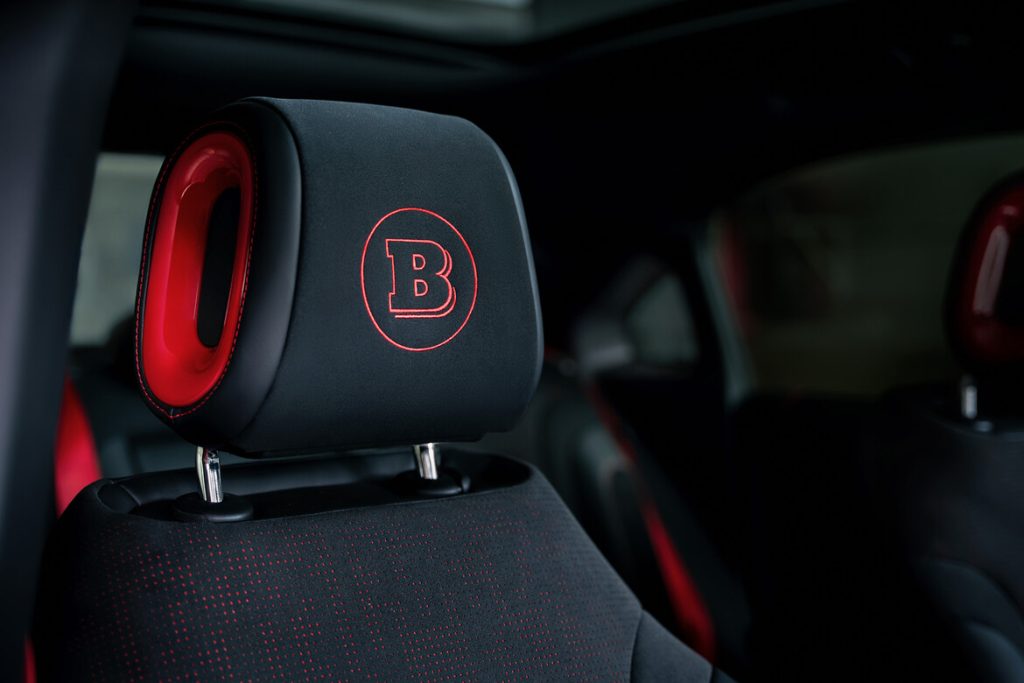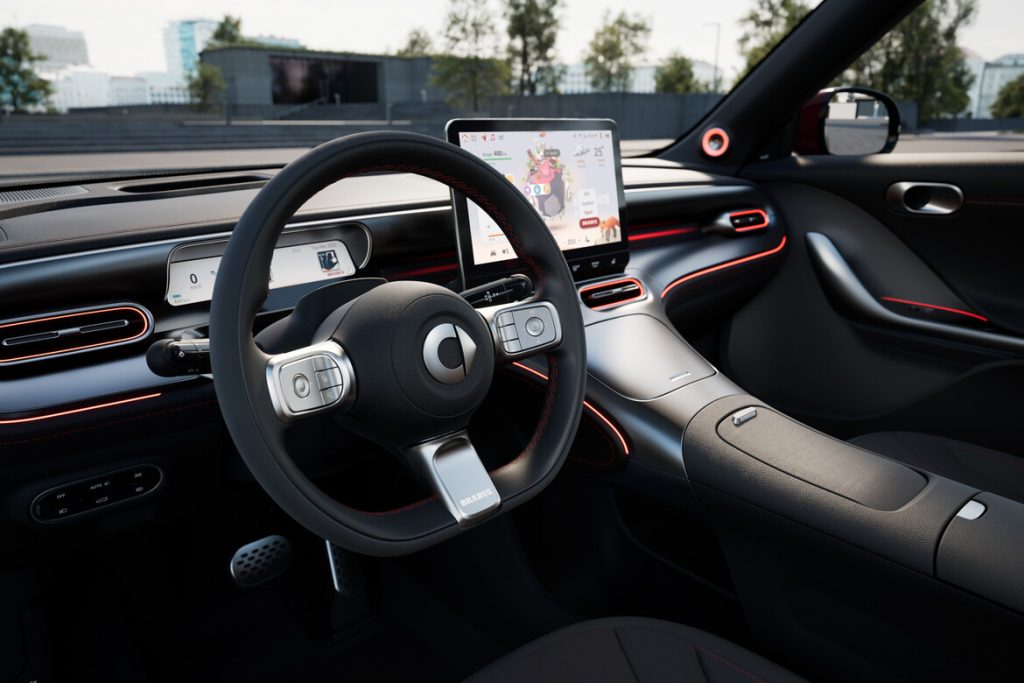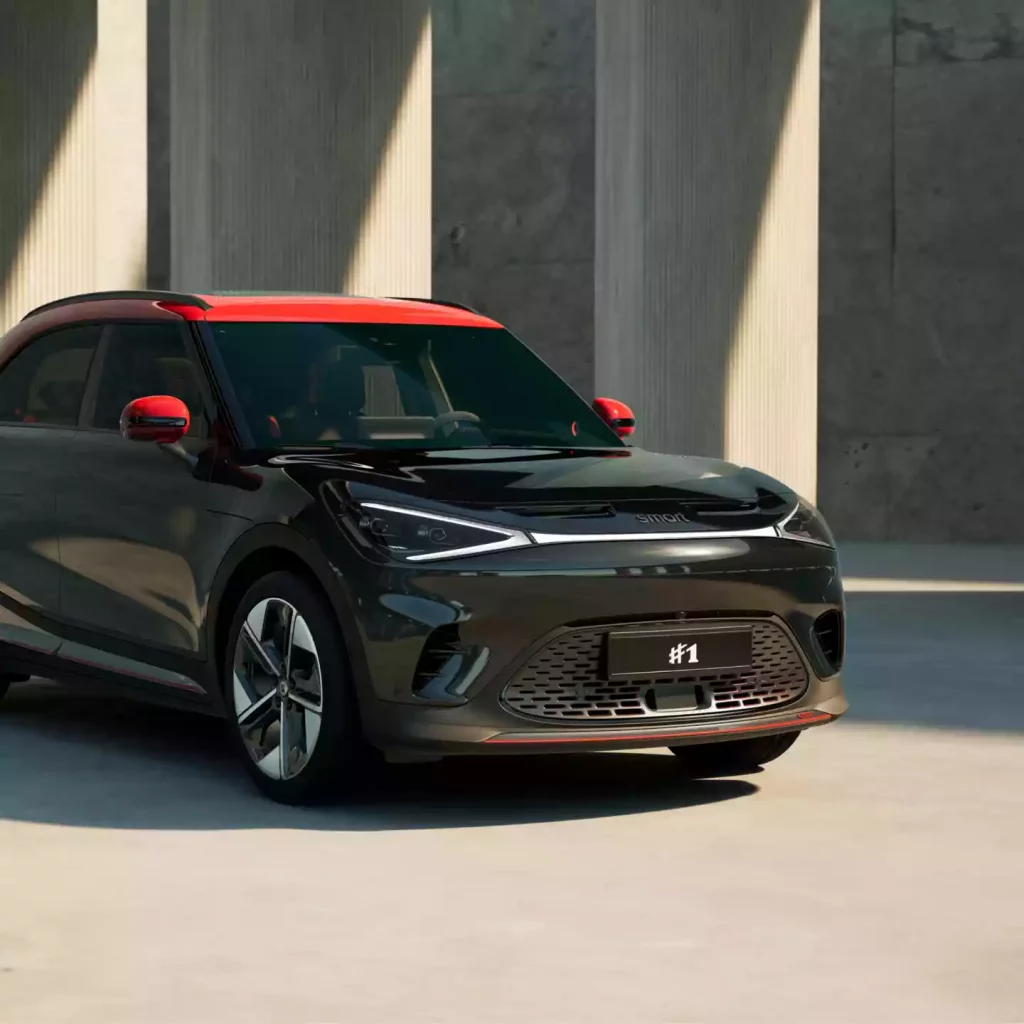A few days ago, we donned clothing that is as unconventional for this association as it is appealing to any motor enthusiast. During Milan Fashion Week in September 2023, we had the privilege of test-driving both the smart #1 and its sportier counterpart, the Brabus.
We have become accustomed to thinking of smart as exclusively the smallest mass-produced car, owing to the brand’s history. However, it is worth taking a moment to examine its origins. smart’s history traces back to 1994 when the Swiss company Swatch and the German Mercedes-Benz (Daimler AG) joined forces to create a “smart” and compact car, hence the name “smart.” In 1998, smart launched its first car, the City-Coupé, distinguished by its bold and innovative design. This vehicle quickly became iconic in European cities due to its compact size and maneuverability. Over the years, smart expanded its model range to include the smart ForTwo, ForFour, and Fortwo Cabrio. These cars gained a reputation for their eco-friendliness and agility in congested urban areas. In 2004, Daimler AG took full control of smart. In March 2019, the Chinese giant Geely, already the owner of Volvo and Lotus, announced the acquisition of 50% of the company’s shares, forming a joint venture with Daimler, the parent company of Mercedes. This move aimed to rejuvenate the brand following a significant decline in sales in Europe and the United States. In 2020, smart announced the complete electrification of its range, resulting in the birth of a new generation of vehicles, including the SUV #1 and the citycar #2, produced in a new facility in China. The smart #2 will replace the current ForTwo, which will cease production in spring 2024. With this acquisition, Geely expanded its portfolio of car brands, which already included Polestar, Lynk & Co, and Proton.

smart #1 Brabus (interiors) – cc: smart_worldwide
However, the smart #1 is a departure from this norm. On one hand, it embodies the principles of efficiency, electrification, and smart design, but on the other hand, it is not a compact car. It measures 4.29 meters in length, positioning the #1 in competition with electric crossovers such as the Volkswagen ID.3, Hyundai Kona Electric, and Peugeot e-2008 on the market. To begin with, the #1 is undeniably a “smart” car (please excuse the pun). It features a sleek and elegant exterior design with LED headlights and taillights, a panoramic sunroof, and a large touchscreen on the dashboard capable of displaying messages and images. The interior is equally clever and of high quality, featuring premium materials like leather and wood trim, ambient lighting, and a digital instrument cluster. The #1 boasts a 12.8-inch touchscreen infotainment system that runs on the Android Automotive OS, providing access to Google services such as Maps, Assistant, and the Play Store. Additionally, the #1 offers advanced connectivity features, including wireless charging, smartphone integration, a Wi-Fi hotspot, and over-the-air updates.

smart #1 Brabus (interiors) – cc: smart_worldwide
The #1 is not only smart but also safe. It features a high-strength steel body structure that ensures occupant safety in the event of a collision. Furthermore, it is equipped with an array of driver assistance systems aimed at preventing accidents or reducing their severity. These systems include adaptive cruise control, lane-keeping assist, blind-spot monitoring, rear cross-traffic alert, forward collision warning, automatic emergency braking, parking assistance, and a surround-view camera.
The #1 might just be more than another electric car; it represents a new era for smart, one that combines performance, technology, comfort, and style in a compact package.

smart #1 Brabus – cc: smart_worldwide
In fact, the influence of Mercedes on this project cannot be understated. The interiors not only reflect the stylistic elements but also incorporate components from the latest electric cars of the Stuttgart brand. The quality of materials and assemblies is unquestionable.
The pricing starts at 40,650 euros for the rear-engine, 272 hp powertrain in the Pro+ version, rising to 44,150 euros for the Premium, 45,450 euros for the Launch Edition, and reaching 48,150 euros for the BRABUS with 428 hp and all-wheel drive.
In conclusion, let us present you with some food for thought: With Tesla recently reducing prices for its brand new entry-level Model 3 to a surprising 42,490 euros, can this smart #1 emerge as a viable alternative to the established market leader?
